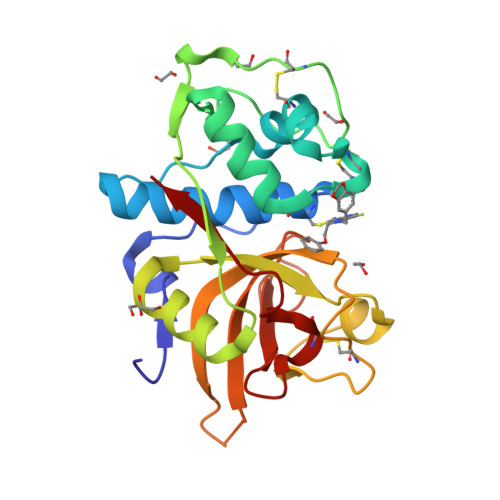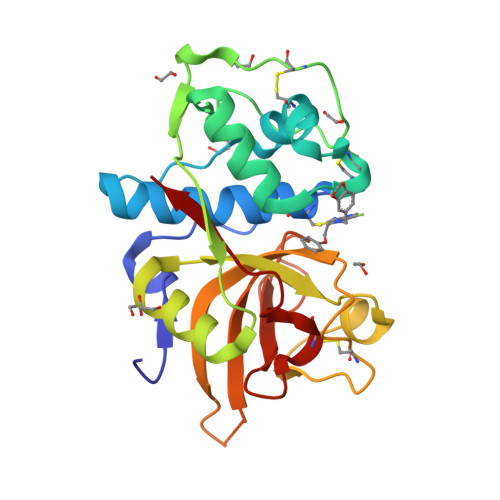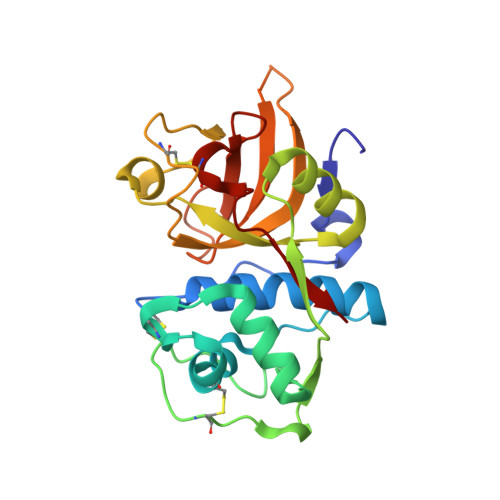Prospective Evaluation of Free Energy Calculations for the Prioritization of Cathepsin L Inhibitors.
Kuhn, B., Tichy, M., Wang, L., Robinson, S., Martin, R.E., Kuglstatter, A., Benz, J., Giroud, M., Schirmeister, T., Abel, R., Diederich, F., Hert, J.(2017) J Med Chem 60: 2485-2497
- PubMed: 28287264
- DOI: https://doi.org/10.1021/acs.jmedchem.6b01881
- Primary Citation of Related Structures:
5MQY - PubMed Abstract:
Improving the binding affinity of a chemical series by systematically probing one of its exit vectors is a medicinal chemistry activity that can benefit from molecular modeling input. Herein, we compare the effectiveness of four approaches in prioritizing building blocks with better potency: selection by a medicinal chemist, manual modeling, docking followed by manual filtering, and free energy calculations (FEP). Our study focused on identifying novel substituents for the apolar S2 pocket of cathepsin L and was conducted entirely in a prospective manner with synthesis and activity determination of 36 novel compounds. We found that FEP selected compounds with improved affinity for 8 out of 10 picks compared to 1 out of 10 for the other approaches. From this result and other additional analyses, we conclude that FEP can be a useful approach to guide this type of medicinal chemistry optimization once it has been validated for the system under consideration.
Organizational Affiliation:
Roche Pharmaceutical Research and Early Development (pRED), Roche Innovation Center Basel, F. Hoffmann-La Roche Ltd. , Grenzacherstrasse 124, 4070 Basel, Switzerland.




















